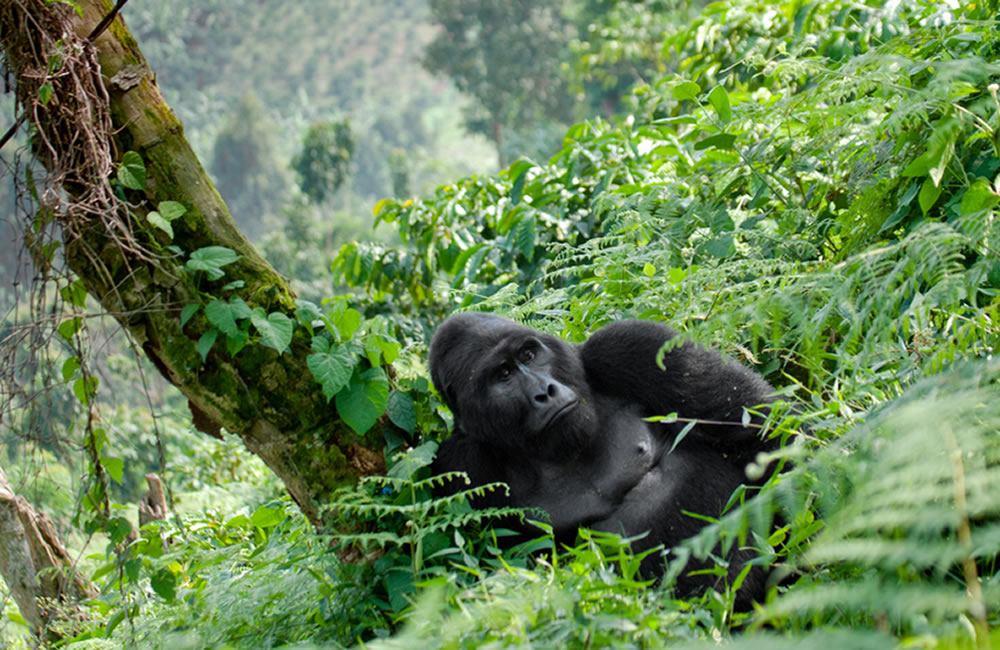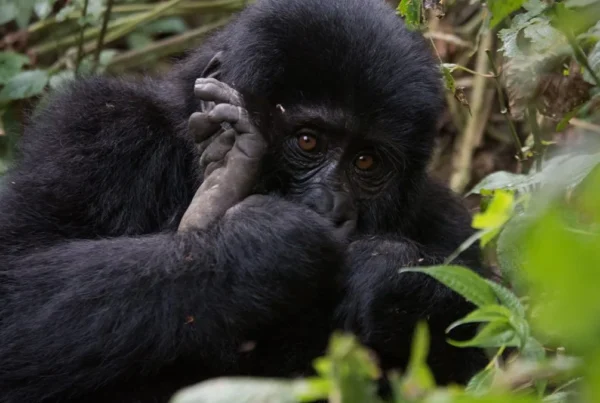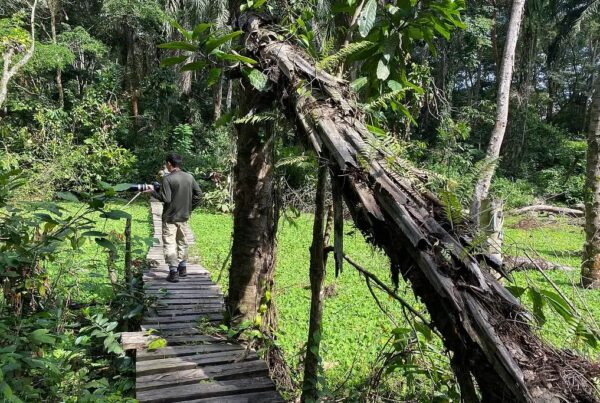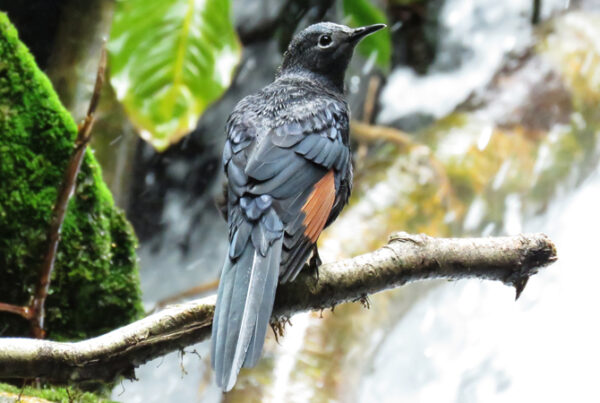Bwindi Impenetrable National Park: Wildlife, Culture, and Adventure
Entering the Heart of Africa’s Untamed Wilderness
Nestled within the mist-cloaked mountains of southwestern Uganda lies a place where time seems to have paused, where nature rules with quiet authority, and where every step taken is a journey into an ancient world. This is Bwindi Impenetrable National Park, one of Africa’s most treasured sanctuaries and a UNESCO World Heritage Site. For many, the very mention of Bwindi evokes images of towering trees, dense vines, and the stirring sight of a mountain gorilla family moving through the shadows of the forest. Yet Bwindi is far more than just a haven for gorillas. It is a living tapestry of wildlife, culture, and adventure, where biodiversity, heritage, and exploration intersect to create an experience unlike any other.
The essence of Bwindi lies in its mystery. Its very name, “Impenetrable,” hints at the challenge and allure of navigating its tangled vegetation and steep ridges. Beyond its physical wilderness, Bwindi carries cultural depth, being home to indigenous communities such as the Batwa, whose traditions remain intricately tied to the forest. Adventure seekers are drawn here not only by the promise of seeing gorillas but also by the call of untamed trails, birdwatching spectacles, and the chance to immerse themselves in the pulse of Africa at its most raw and authentic.
To step into Bwindi is to step into a world where nature has been preserved in its purest form, where every moment is shaped by the rhythm of the wild, and where every traveler leaves with a sense of awe. Understanding this park requires delving into its wildlife riches, its cultural significance, and its boundless adventure opportunities. Only then can the true spirit of Bwindi be appreciated.
The Wildlife of Bwindi: A World of Rare Encounters
Mountain Gorillas: The Crown Jewel of Bwindi
At the heart of Bwindi’s international fame are the mountain gorillas, majestic primates that exist in only a handful of locations on earth. With nearly half of the world’s remaining mountain gorilla population calling Bwindi home, the park has become synonymous with gorilla trekking. These gorillas live in structured family groups, led by powerful silverbacks whose authority guides the movements and behavior of their families.
The encounter with a gorilla family is an experience that transcends tourism. To watch a silverback feeding quietly, to see infants clinging to their mothers, or to witness the intricate social bonds expressed through grooming and play is to realize how closely connected humans are to these gentle giants. The fact that such encounters take place within a strictly managed conservation framework makes the experience not only extraordinary but also deeply meaningful. Every trekker is reminded that their presence contributes directly to the survival of these endangered primates.
Other Primates and Mammals of the Forest
While gorillas dominate the spotlight, Bwindi shelters an astonishing diversity of other wildlife. The black-and-white colobus monkey, with its flowing mantle of fur, leaps through the canopy, while L’Hoest’s monkeys and red-tailed monkeys can be seen darting between branches. The elusive chimpanzee, though more commonly associated with Kibale Forest, also inhabits Bwindi, further highlighting the park’s importance as a primate sanctuary.
Beyond primates, Bwindi is home to over 120 species of mammals. Forest elephants move silently through the undergrowth, leaving only footprints as evidence of their passage. Bush pigs, duikers, and giant forest hogs roam the forest floor, while nocturnal creatures such as civets and genets emerge under the cover of darkness. The sheer variety of mammals underscores Bwindi’s ecological richness and its role as one of Africa’s most biodiverse ecosystems.
Avian Splendor: A Birdwatcher’s Paradise
Bwindi is celebrated globally as one of the best birding destinations in Africa. With more than 350 bird species, including 23 endemics to the Albertine Rift, it attracts ornithologists and bird lovers from across the world. The forest canopy comes alive with the calls of rare species such as the African green broadbill, the handsome francolin, and the Rwenzori turaco. Vibrant sunbirds shimmer in the sunlight, while forest robins and greenbuls provide a constant soundtrack beneath the dense foliage.
The variety of habitats, ranging from lowland forest to montane regions, allows for an exceptional range of avian species to flourish. Birdwatching in Bwindi is not a peripheral activity but a highlight in itself, capable of captivating visitors for days on end.
The Cultural Heritage of Bwindi: Guardians of Tradition
The Batwa People: Keepers of the Forest Spirit
Long before Bwindi became a national park, it was home to the Batwa pygmies, an indigenous community whose way of life was deeply intertwined with the forest. For centuries, the Batwa lived as hunter-gatherers, relying on the forest for food, medicine, and spiritual sustenance. Their knowledge of plants, animal behavior, and survival skills was unmatched, forming a cultural heritage that remains invaluable today.
Although the establishment of the park in 1991 restricted traditional forest access, efforts have been made to preserve and celebrate Batwa culture. Cultural experiences led by Batwa guides allow visitors to understand their history, from traditional hunting techniques to storytelling, dance, and spiritual practices. These encounters are more than cultural displays; they represent resilience and a continued connection between people and the forest.
Local Communities and Shared Benefits
The creation of Bwindi as a protected area brought challenges for surrounding communities, yet it also created opportunities. Today, local Ugandans play a central role in tourism, working as guides, porters, lodge staff, and artisans. Revenue-sharing schemes ensure that a portion of gorilla trekking permits directly supports community projects, from schools to health centers.
Visitors are often encouraged to explore villages around the park, where they can witness traditional crafts, participate in dance performances, or learn about agricultural practices. These interactions deepen the understanding of how conservation and culture coexist, with each reinforcing the other.
Adventure in the Impenetrable Forest
Gorilla Trekking: A Journey into the Wild
The ultimate adventure in Bwindi is undoubtedly gorilla trekking. Treks begin with an early morning briefing before groups set off under the guidance of experienced rangers and trackers. The journey through the forest can be arduous, involving steep climbs, muddy paths, and dense vegetation, but the reward of encountering a gorilla family is beyond measure.
The moment of arrival—when a ranger signals the presence of gorillas nearby—is electrifying. Silence falls, and suddenly the forest reveals its most secretive inhabitants. For one precious hour, trekkers observe gorillas in their natural habitat, a privilege that lingers in memory long after departure.
Hiking Trails Beyond the Gorillas
Though gorilla trekking dominates attention, Bwindi also offers a network of trails that reveal its beauty in quieter ways. The Munyanga River Trail introduces visitors to butterflies, birds, and orchids, while the Ivy River Trail connects Buhoma and Nkuringo sectors through deep forest landscapes. The Rushura Hill Trail offers panoramic views across the Rift Valley and into the distant peaks of the Rwenzori Mountains.
Each trail provides a different perspective of Bwindi, reminding visitors that the park is not defined solely by gorillas but by the entirety of its ecosystem. Hiking in Bwindi is a journey into solitude, adventure, and reflection.
Birdwatching Expeditions
Dedicated birdwatching tours in Bwindi provide adventure of a quieter but equally thrilling kind. Equipped with binoculars and patient guides, birders can spend hours searching for elusive Albertine Rift endemics. The challenge of spotting the African green broadbill, for instance, becomes an adventure in itself, as it resides only in small pockets of the forest. Birding in Bwindi is less about speed and more about immersion, requiring stillness and attentiveness that reveal the forest’s subtle rhythms.
Conservation and the Future of Bwindi
Bwindi’s global importance extends beyond tourism. It is a keystone in the fight to preserve endangered species and fragile ecosystems. Gorilla conservation has become a flagship success story, with populations gradually increasing thanks to strict protection, veterinary intervention, and sustainable tourism practices. Each gorilla trekking permit purchased supports conservation efforts, making visitors direct participants in safeguarding the species.
Yet challenges remain. Human-wildlife conflict, climate change, and pressures from population growth in surrounding areas continue to test the balance between conservation and development. Ongoing projects in Bwindi emphasize community engagement, reforestation, and anti-poaching efforts, reinforcing the idea that conservation succeeds only when people are part of the solution.
Why Bwindi is More Than a Destination
To describe Bwindi solely as a national park is to understate its significance. It is at once a wildlife sanctuary, a cultural landscape, and an adventure arena. Its gorillas inspire global wonder, its birds delight enthusiasts, its communities embody resilience, and its trails challenge and reward explorers. Bwindi is a reminder of what remains untamed in the world, of the spaces where humanity is humbled by nature’s grandeur.
Travelers who enter Bwindi do not leave unchanged. The mist of the forest lingers in memory, the eyes of a gorilla resonate with familiarity, and the voices of local guides carry lessons that endure long after the journey ends.
A Call to Explore Bwindi
Bwindi Impenetrable National Park is not just a place to be visited; it is a destination to be experienced in its fullness. Its wildlife astonishes, its culture enlightens, and its adventures challenge the body and spirit. To prepare for such an experience is to prepare for one of life’s greatest journeys, one that combines discovery, conservation, and transformation.
For those ready to immerse themselves in this unparalleled adventure, the guidance of professionals ensures the experience is seamless, responsible, and deeply enriching. By booking safaris and tours through WildHorn Africa, travelers are assured of expert planning, meaningful cultural encounters, and sustainable practices that honor both wildlife and communities. With WildHorn Africa, Bwindi becomes not only a destination but a journey into the heart of Africa’s most extraordinary wilderness.





 WildHorn Africa – Authentic and unforgettable tours across Africa, guided by local experts who know the land, wildlife, and culture best.
WildHorn Africa – Authentic and unforgettable tours across Africa, guided by local experts who know the land, wildlife, and culture best.


